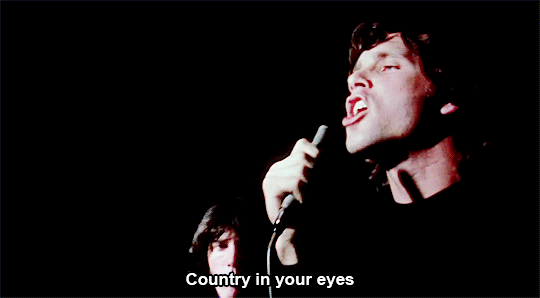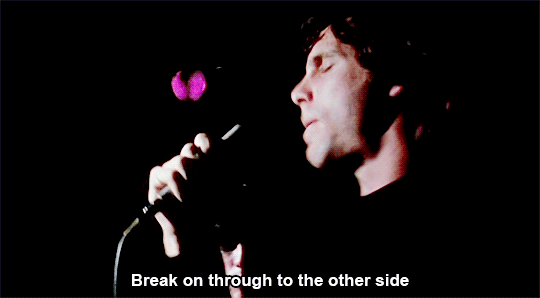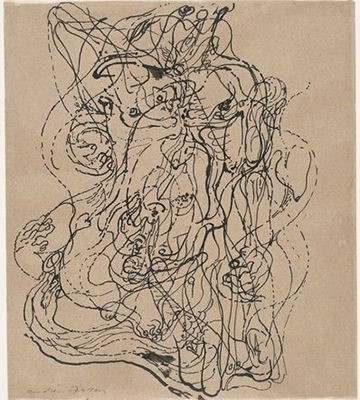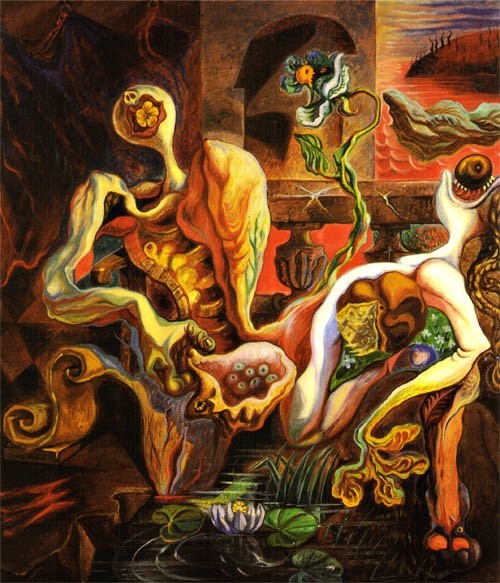#Antonin Rimbaud
Explore tagged Tumblr posts
Quote
In this man, possessed but miraculously free (for he plays with those who possess him), the poetic act becomes verifiable in its genesis at the heart of the being who, willingly, breaks adrift in order to seek the fabulous adventure, always recommenced — to tear the Others from themselves, to dress them in living flesh and, projecting them into space, give them their chances. Thus the poet will be saved (or lost) as Rimbaud or Lautréamont were, when they ferociously unleashed the monsters that haunted them—and as Antonin Artaud failed to be when, wishing to tame them, he was their prisoner instead.
Nora Mitrani, Surrealist Women: An International Anthology, on Fernando Pessoa
8 notes
·
View notes
Text
CIEN AÑOS DE SURREALISMO
Hoy se cumplen cien años del primer manifiesto del surrealismo. Mi articulo en Faro de Vigo Francisco R. Pastoriza En febrero de 1916 un poeta rumano llamado Tristan Tzara fundó en el piso superior de una cervecería de Zurich el movimiento Dadá para acoger a los creadores rechazados por los circuitos oficiales del arte. Los primeros en unirse a su proyecto fueron el artista alsaciano…
#André Breton#Antonin Artaud#Arthur Rimbaud#Cabaret Voltaire#Dadaísmo#Duchamp#Freud#Hans Arp#Henri Bergson#Jan Miró#Lautréamont#Louis Aragon#Luis Buñuel#Magritte#Man Ray#Max Ernst#Paul Éluard#Paul Delvaux#Salvador Dalí#Surrealismo#Tristan Tzara
0 notes
Text




“The Doors achieved something more than just music. Morrison’s furious. The song “Break on Through (To the Other Side)” blew my mind. It was fast, and the singer yelled. There was a lyric that grabbed me: “I found an island in your arms/Country in your eyes/Arms that chain/Eyes that lie/Break on through to the other side.” That’s heavy, and the way he’s screaming, for a little kid it’s kind of terrifying. Then when I got older, as a young late teenager, early 20-something guy, you hear The Doors in a totally different way. You hear the poetry, you hear the power of the lyric and then you find out he read Arthur Rimbaud, so you got to go get Arthur Rimbaud’s writing, and that’s monumental. That he was into Antonin Artaud, you read that stuff which is really far out and you become even more inspired. The story of the band is steeped in myth-tinged legend, but the facts of their brief history are as compelling as they are at times tragic. Jim Morrison was a true wild man of rock & roll.” — Henry Rollins
#the doors#jim morrison#ray manzarek#robby krieger#john densmore#psychedelic rock#60s#rock n roll#acid rock#henry rollins#punk
1K notes
·
View notes
Note
For the ask meme, if you're interested in answering: Seto for 17 + 27 and also 23 because that seems like a soft and kind of silly fun question. And also, if you'd like, Pegasus for 25 and also 23. Thank you! I hope you have a nice day/night!
Thank you so much for the ask!! I feel very honored!! 🩵🩵
It’s the first time for me doing something like this because I often feel insecure about my character takes, or because I find it hard to answer questions on the spot. Also, I probably have more for all of these questions but this is just what comes to my mind now at 2 am.
17. Quotes, songs, poems, etc. that I associate with them
I actually have a playlist of songs that remind me of him, or his relationship with various people from his life, that I shared only with a small number of people because I’m kind of self conscious about my music tastes >.>
But there are certain songs that I just cannot help but think of him when I listen.
“Numb” and “Crawling” by Linkin Park, the first makes me think of his relationship with his father figures, the second of the effects of his trauma.
“Hoax” by Taylor Swift is a song I cannot help but associate with his relationship with Atem. I do not really ship them but his relationship with him is in canon Seto’s deepest connection besides the one with Mokuba, and probably Gozaburo. I feel like that song represents very well Seto’s feelings of bitterness at Atem leaving.
“You knew it still hurts underneath my scars
From when they pulled me apart
You knew the password, so I let you in the door
You knew you won, so what's the point of keeping score?
You knew it still hurts underneath my scars
From when they pulled me apart
But what you did was just as dark
Darling, this was just as hard
As when they pulled me apart”
As for quotes:
“you keep fighting because you feel you need to earn permission to exist. you're even willing to sacrifice your own life for it. no—one can grant you that affirmation. no stamp certifies that you deserve to live”
“And I was so young
When I behaved
Twenty five
Yet now I find
I've grown into
A tall child”
-Mitski, First Love/Late Spring (the whole song actually…I know it’s a reach, but my Seto brainrot forces me to see the words “window” and “ledge” and relate them only to him)
“We do not want to be spared by our best enemies, not by those either whom we love thoroughly”
-Nietzsche, Thus Spoke Zarathustra
“No one has ever written, painted, sculpted, modeled, built, or invented except literally to get out of hell”
-Antonin Artaud
“I don’t know what’s going to come out of me,” I told her. “It has to be perfect. It has to be irreproachable in every way.”
“Why?” she said.
“To make up for it,” I said. “To make up for the fact that it’s me”
-Suzanne Rivecca
As for the poem, it’s actually a rather dark one that I associate with him, Le Cœur supplicié by Arthur Rimbaud (tw for discussions of sa if anyone wants to look up how it has been often interpreted). To contextualize, my interpretation of the abuses Seto endured in his life is that they were very brutal. But I also associate it to the profound violation Seto experienced when Gozaburo stole his designs (or if you interpret it that he handed them over willingly in manga canon, how he would feel looking back at that).
27. Their guilty pleasure
Bad horror movies, because he is still the boy who built Death-T.
23. If they were a scented candle, what would they smell like? For both Seto and Pegasus.
For someone that loves scented candles, I am actually having trouble with this one. I’m going for coffee or moss for Seto. Maybe lavender for Pegasus?
25. 3 things they’d want to take with them if they were dropped off in the middle of nowhere (for Pegasus)
Not the biggest Pegasus fan or expert, but I would say a picture of Cyndia, a piece of Funny Bunny memorabilia and a bottle of wine.
9 notes
·
View notes
Text



Evidence by Patti Smith and soundwalk Collective
Inspired by poets such as Rimbaud, Arnaud, Daumal
And immersive installation where you walk around with headphones and the sound changes as you move through the space. Recordings from India, Mexico, Ethiopia
“Quête poétique et immersive, « Evidence » est une ode à un monde sans frontières, une réflexion contemporaine sur l'infini et l'universel, une quête spirituelle de l'unité comme présence vivante et vivifiante.”
#patti smith#centre pompidou#music#arthur rimbaud#antonin artaud#poetry#installation#soundwalk collective#paris#2023expo#exhibit#exhibition
6 notes
·
View notes
Text
Sì, ho gli occhi chiusi alla vostra luce.
Non sono cristiano.
Rimbaud
18 notes
·
View notes
Photo

Exposition immersive "Evidence - Soundwalk Collective & Patti Smith" sur les traces des poètes et aventuriers Arthur Rimbaud (1854-1891), Antonin Artaud (1896-1948) et René Daumal (1908-1944) au Centre Pompidou, janvier 2023.
8 notes
·
View notes
Text
Fun fact:

At one point I was seriously considering naming Anthony "Paul", so his and Arthur's names would be a tribute to the poets Paul Verlaine and Arthur Rimbaud. I gave up on the idea, not only because the reference doesn't really make much sense in context, but also because I realized that those are also the names of Simon&Garfunkle which would be. Very contrived and weird. Also also, Paul was just. Too short. I knew that egomaniac needed a "bigger" name.
So, why Anthony? Well, the inspiration mostly came from a polish novel tilted "Madame". It's a story of a young man trying to make his life more poetic and meaningful while living in the post-stalinist Poland and being the most annoying, pretenstious asshole on the planet. The book was written by Antoni Libera, and yeah, the main characters was a huge inspiration for writing Anthony.
Also, Antonin Artuad. Just because.

3 notes
·
View notes
Note
Hi, hello! I want to read something that is poignant and poetic. detailed and still vague, or opaque? abstract emotion and metaphors are my forte. please send your suggestions?
Charles Baudelaire, Edgar Allan Poe, Kurt Vonnegut, Chuck Palahniuk, Fyodor Dostoevsky, Franz Kafka, Sylvia Plath, Jorge Luis Borges, Vladimir Nabokov, Isaac Asimov, Laure, Georges Bataille, Donna Haraway, Albert Camus, Marquis de Sade, Arthur Rimbaud, Agota Kristof, Gertrude Stein, E. M. Cioran, Maurice Blanchot, Mary Shelley, Milan Kundera, Hermann Hesse, Antonin Artaud, Alejandra Pizarnik, Paul Verlaine, Stéphane Mallarmé, Clarice Lispector.
130 notes
·
View notes
Photo


What they want
Charles Bukowski, Love Is a Dog from Hell
#American#Charles Bukowski#César Vallejo#Vincent van Gogh#Arthur Rimbaud#Ludwig van Beethoven#Ezra Pound#Thomas Chatterton#Ernest Hemingway#Blaise Pascal#Antonin Artaud#Fyodor Dostoevsky#Hart Crane#Federico García Lorca#John Berryman#William S. Burroughs#Norman Mailer#Love Is a Dog from Hell
137 notes
·
View notes
Text

Carta à Vidente, a Portuguese translation of Antonin Artaud's Lettre à la voyante, with illustrations by Antónia Gonçalves—another recent title from ediçoes 100/cabeças. This accordion-fold booklet with persimmon slipcase pairs Artaud's 1926 text on one side with a 2019 essay by Sergio Lima.
Artaud's letter was first published in La révolution surréaliste, # 8, his response to André Breton's Lettre aux voyantes published in the fifth issue, but perhaps more importantly in response to Rimbaud's lettres du voyant, a relationship that Sergio Lima revolves in his text.
2 notes
·
View notes
Photo

THE TUTU BY LÉON GENONCEAUX
Had The Tutu appeared when it was written in 1891 it would have been one of the defining works of late nineteenth-century French literature. Juan Goytisolo is among its admirers, and noted that: “The Tutu has been described as the most mysterious novel of the nineteenth century, it is probably one of the strangest, and certainly one of the most fascinating… We find in it a clear presentiment (one cannot say influence, since no one read this book) of the audacities of Jarry, Roussel, Breton, Ionesco and Queneau…”
Its author, the publisher Léon Genonceaux (1856–?), is as much of an enigma as the two legendary enfants terribles whom he was the first to publish: Arthur Rimbaud and the Comte de Lautréamont. When he brought out The Tutu he was already in trouble with the police for “immoral publishing”, and realised that sending it to bookstores would certainly land him in jail. The book disappeared for nearly 100 years, and its author likewise — after 1905 nothing is known of him. Finally republished in the 1990s, The Tutu was hailed by reviewers as the bastard child of J.-K. Huysmans and Antonin Artaud.
Genonceaux appears to have been intent on outraging just about everyone, and The Tutu is gleefully Nietzschean in its dismemberment of contemporary morality. It is simultaneously a sort of ultimate “decadent novel” and outlandishly modern; it is also repellent, infantile and deeply cynical. Yet despite all its absurdities and extravagances, in the end it somehow manages to appear compassionate, poetic, funny, and even — most absurdly of all — rational.
Translated and introduced by Iain White.
25 notes
·
View notes
Text
ANDRE MASSON

Andre Masson, Automatic Drawing, 1924
https://www.moma.org/collection/works/38201?artist_id=3821&page=1&sov_referrer=artist

Andre Masson, In the Tower of Sleep, 1938
https://art5308.files.wordpress.com/2016/11/magritte-book.pdf

Andre Masson, The Metamorphosis of the Lovers, 1938
https://robdigitalimage.wordpress.com/2015/06/11/concepts/

Andre Masson, The Metamorphosis of the Lovers, 1938
https://utopiadystopiawwi.wordpress.com/surrealism/andre-masson/gradiva/masson-gradiva-1939/
Childhood
André-Aimé-René Masson was born on January 4, 1896, in the small town of Balagny (Oise), north of Paris. He was the eldest of three children in a family of modest means. Growing up in the country, he felt a former connection with nature and the world.
Masson's childhood encouraged unconventional thought. In particular, his mother was a French teacher who promoted unusual texts that would later become important to the Surrealists and were considered scandalous. While his father was more conservative in his beliefs, he did not interfere with Masson's artistic ambitions.
Early Training and Work
Through the efforts of his mother and the quality of his drawings, Masson was admitted to the Brussels Académie des Beaux-Arts at age eleven, which was much younger than usual. He studied under the Belgian painter and sculptor Constant Montald, whose method of mixing glue with water and pigment proved very influential for Masson's later technique. He also took a side job making embroidery designs, which meant his days were filled with study and work.
In his limited free time, Masson read insatiably. He was fascinated by the Quattrocento and the work of the Renaissance masters, along with fin-de-siècle artists like Paul Gauguin, Vincent van Gogh, and Paul Cézanne. He saw a continuum between the two, remarking when he first James Ensor's Christ in the Midst of the Storm, that "contemporary painting could be as extraordinary as the old masters!"
His interests continued to include the modern (he was shocked by Cubism when he first encountered the works of Picasso and Braque) and the traditional (he traveled to northern Italy in 1914 to study fresco painting). Masson also traveled to Switzerland and became fascinated with the philosophical writings of Frederich Nietzsche, which profoundly affected his personal life.
He returned to Paris in 1915 and joined the French army, enduring the violence, trauma and death of World War I trench warfare. He was discharged in 1917 after suffering a severe chest injury; he spent months recovering in military hospitals and spent time in a psychiatric facility. While the experience of being at war was not something Masson often explicitly spoke about, it was the root of the very violent imagery in his work and remained with him for his entire life. After his discharge, he met his wife, Odette Cabalé, and the two relocated to Paris.
Mature Period
In Paris, Masson began making pottery at a studio center for veterans with disabilities. He also took up work with the Journal Officiel. His work from these postwar years featured erotic, sometimes pornographic content that varied widely in style and technique. The founder of the Surrealist movement, André Breton, would later call this Masson's 'erotic period' and believed it to be key to understanding his entire oeuvre.
According to the writer Malcolm Haslam, Masson hosted regular gatherings in his Paris studio at 45 rue Blomet. Here, along with Antonin Artaud, Michel Leiris, Joan Miró, Georges Bataille, Jean Dubuffet, and Georges Malkine, the group experimented with altered states of consciousness, smoking hashish and opium added to wine and music, discussing writers central to the developing Surrealist movement: Nietzsche, Arthur Rimbaud, Comte de Lautréamont, and even the Marquis de Sade.
While vast and divergent in many ways, this group of works shared themes of deep uncertainty and humanity's coexistence with nothingness, ideas drawn from Nietzsche. This philosophy also featured themes of metamorphosis and argued for the changeable nature of organic existence, ideas that would become increasingly important to Masson's art.
In 1921, Masson met fellow artist Joan Miró through their mutual friend, Max Jacobs. Masson and Miró immediately began a friendship that would be influential to both of their careers. The group of artists often met at a studio on the rue Blomet that became a place of intellectual and artistic knowledge, discussion and exploration. Visitors included Ernest Hemingway, Gertrude Stein and the playwright Armand Salacrou, who were some of the first buyers of Masson's work.
In 1923, Masson was offered a contract by Daniel-Henry Kahnweiler, a notable art dealer. Although it was not (yet) highly paid, this opportunity allowed Masson to focus solely on his art career. The following years, which encompassed both the Dada movement and the birth of Surrealism, proved some of the most exciting and successful of Masson's career. His style was changeable, and he began to experiment with automatic methods of working, often incorporating motifs from ancient Greek and Roman mythology.
During the 1930s, Masson's work grew increasingly violent and disturbing. His 1930s series of slaughterhouse paintings, built on the art historical legacy of Chaim Soutine's Carcass of Beef (early 1920s) and Rembrandt's Slaughtered Ox (1655), but brought new brutality and sexual associations to the depictions of flesh and meat. It is speculated that this may have been due to his turbulent personal life at the time. Following a 1929 divorce, he met his second wife, Rose, broke with the Surrealist group and moved out of Paris to establish a more solitary life in St-Jean-de-Grasse. He then relocated to Spain, only returning to France in 1936 after witnessing atrocities in the years prior to the Spanish Civil War. Once back in France, he reconciled with Breton and the Surrealists.
In 1941, Masson and his family sought and secured political asylum in the United States, as did many of the Surrealists. Masson's time in America transformed and revitalized his work, introducing new variety in subject matter, style and motifs. He began to focus more on abstractions from nature, alongside his fascination with metamorphosis and cosmic unity. In 1943, Masson underwent his final split from Breton, however he continued to experiment with Surrealism as a style.
Late Period
At the end of World War II, Masson and his family were able to return to France in 1945. During a trip to the south of France, Masson became highly interested in southeastern Asian art and Taoism. His work became increasingly existential, conveying a sense of universal fusion through abstractions of natural landscapes. He remained based in Paris but traveled back and forth to a country house in Aix. In 1965, he was commissioned to paint the ceiling of the Odéon-Théâtre de France and although he was thrilled to complete the project; it proved to be taxing for the aging artist and it was his last major work. This large circular installation, featuring classical figures like Agamemnon and Shakespearean characters like Falstaff, was celebrated as a triumph. The actor Jean-Louis Barrault was said to have declared, "At last we have a sun over our heads." His later career included a series of landscape themes and non-objective paintings. Masson died at his home in Paris in 1987.
The Legacy of André Masson
Masson tackled many of the concepts central to Surrealism and established new ways of representing traditional themes trauma, angst, violence, sex, and death with modern imagery. The philosopher Jean-Paul Sartre credited him with "retracing a whole mythology of metamorphoses: (transforming) the domain of the mineral, the domain of the vegetable and the domain of the animal into the domain of the human."
Masson's work influenced numerous 20th-century artists, the most prolific being Jackson Pollock and Mark Rothko. Pollock's Action Painting in particular drew on Masson's experimental use of the automatic technique. Additionally, his use of block coloration and abstraction of form also strongly influenced other artists within the New York School. The practice of automatism has continued to resurface and remains an influence on contemporary art.
Masson's work was also of importance because of its eclectic and multifaceted nature. He experimented with different styles and techniques, so that although he is primarily associated with Surrealism, his work advanced perspectival elements found in Cubism and popularized the use of automatic methods of mark-making that channeled unconscious impulses into visual images. His long career included tremendous range, but featured deeply emotional transparency that allowed viewers to understand the emotional effects of war trauma.
3 notes
·
View notes
Photo

[ACTION #4] Masslose Gegenpoetiken
»Ich bin nicht gehetzt, ich ersticke nicht, ich bin nicht vernichtet, ich bin nicht verschüttet, ich bin nicht eingekreist, ich bin nicht vernichtet, ich atme.« Christophe Tarkos
Mai-Juni 1886. Die Zeitschrift La Vogue veröffentlicht Rimbaud’s Les Illuminations. Das Gedicht Démocratie (verfaßt nach der Niederschlagung der Pariser Kommune) benennt darin den erstickenden Kolonialismus, die Zumutungen kapitalistischer Verhältnisse (die eiskalten Gesetze der Trader) und das Niedermetzeln der logisch folgenden Revolten.
Juni 1872. Marx und Engels berichten in Das Kommunistische Manifest von der Hetzjagd des Papstes, der französischen Rechten (u.a. der Neoliberalen), sowie der deutschen Polizei auf das ‘Gespenst des Kommunismus’.
April 1933. An der Sorbonne hält Antonin Artaud den Vortrag Le théâtre et la peste, in dem er seine These erläutert, dass Pesterreger und anhaltende Aufstände die Gesellschaft hin zu einem kathartischen Punkt führen, auf dessen Kulmination, Energien und Gewalt freigesetzt werden, die revolutionäre Veränderungen herbeizuführen vermögen. Die absolute Freiheit in der Revolte.
Juli 1970. Carla Lonzi gründet gemeinsam mit Carla Accardi das Kollektiv Rivolta femministe.
29. November 1991. Die Dichterin Miyó Vestrini begeht Selbstmord durch die Einnahme einer Überdosis des Medikaments Rivotril. Es gibt immer einen guten Grund. Die Welt um sich herum zu bescheissen. Brennpunkte einer unsichtbaren Symmetrie. April 1993. Die Erscheinungsweisen von Gespenstern, insbesondere den Klopfzeichen von Marx und Engels (das Gespenst des Kommunismus), das der Neoliberalismus seit Ewigkeiten für tot erklärt, analysiert Jacques Derrida in einem Vortrag an der University of California, Riverside und postuliert ein Hinausgehen über Hamlets existentieller Gegenüberstellung von Sein und Nichtsein, den marxistischen Implikationen.
2008. M. NourbeSe Philip erzählt/erzählt nicht die Geschichte des Massakers auf dem britischen Sklavenschiff Zong. Aufgrund von Navigationsfehlern benötigte die Zong im Jahr 1781 doppelt so lange für die Rückfahrt von der Westküste Afrikas als vorgesehen, weshalb der Kapitän die daraus resultierende Nahrungs- und Wasserknappheit dadurch auszugleichen suchte, dass er 150 Sklaven über Bord werfen liess, wodurch er später gegenüber der Versicherung einen Rechtsanspruch auf einen Verlust (der Ware!) geltend zu machen hoffte.
25. Mai 2020. Der 46 jährige George Floyd wird von der Polizei in Minneapolis ermordet.
1| Alles was zur Unsichtbarkeit gezwungen ist muss sichtbar werden.
2| Die Glasaugenblicke der Dichtung und ihre Poetiken, die in eigens dafür vorgesehene Räume gesperrt werden. Während die Kunst die Komplicenschaft mit den gegenwärtigen Schweinereien fortsetzt.
3| Verse auf dem Übertragungsweg eines Pesterregers oder mit dem Zünder einer Granate initiiert (Antonin Artaud’s Théâtre de la cruauté und Miyó Vestrini’s Grenade in Mouth). Weil die Poesie Definitionen und Festlegungen zu entkommen versucht.
4| Die selbstmörderischen Impulse Miyó Vestrinis. Man braucht Zeit und Geduld zum Sterben. Der Tod als Ressource ihrer Poetik. Die innere Schwerkraft sich kreuzender Kontaminationen, die auf eine unkalkulierbare Wahrheit zusteuern. Die wässerigen Gräber, flüssigen Systeme — schliesslich hält man sich auf die eine oder andere Weise am Leben. Im Keller eine Gruppe erfrorener Vorläufer (César Vallejo aus einer anderen Perspektive betrachtet).
5| Eine Poetik der Verwundbarkeit. Sich selbst in einer inkonsistenten Gestalt überlebt zu haben, die Struktur einer verschwindenden Erscheinung (de l’apparition disparaissante). Psychosen, Depression, Neurosen, Schizophrenie: der Schmerz den eine hässliche Welt hervorruft. Der ranzige Geruch falscher Zuversicht. Die lauernde Ratte am Fuß des Bettes.
[...]
READ MORE
8 notes
·
View notes
Photo


Oscar: The Handler
#Oscar#Fracois Arnaud#François Arnaud#Antonin Rimbaud#Cesare Borgia#J'ai tué ma mère#The Borgias#Blindspot#Jaimie Alexander#Jane Doe#Remi#Alice Kruger#Sif#Joscar#Jane x Oscar#Jane and Oscar#Oscar x Jane#Oscar and Jane#The man with the tree tattoo#the handler#special feature#love#couple
11 notes
·
View notes
Text
Gli Angeli non hanno modo di conoscere perché ogni vera conoscenza è oscura
Dobbiamo credere al corpo, ma come al germe di vita, al seme che fa spaccare i selciati, che si è conservato, perpetuato nella sacra Sindone o nelle bende della mummia e che testimonia la vita, in questo mondo così come è. Abbiamo bisogno di un’etica o di una fede, e questo fa ridere gli idioti; non è un bisogno di credere a qualcosa d’altro, ma un bisogno di credere a questo mondo qui, di cui gli idioti fanno parte.
Gilles Deleuze, L’immagine-tempo
#gilles deleuze#antonin artaud#immagine-tempo#credenza#arthur rimbaud#jean luc godard#philippe garrel#jean louis schefer
8 notes
·
View notes